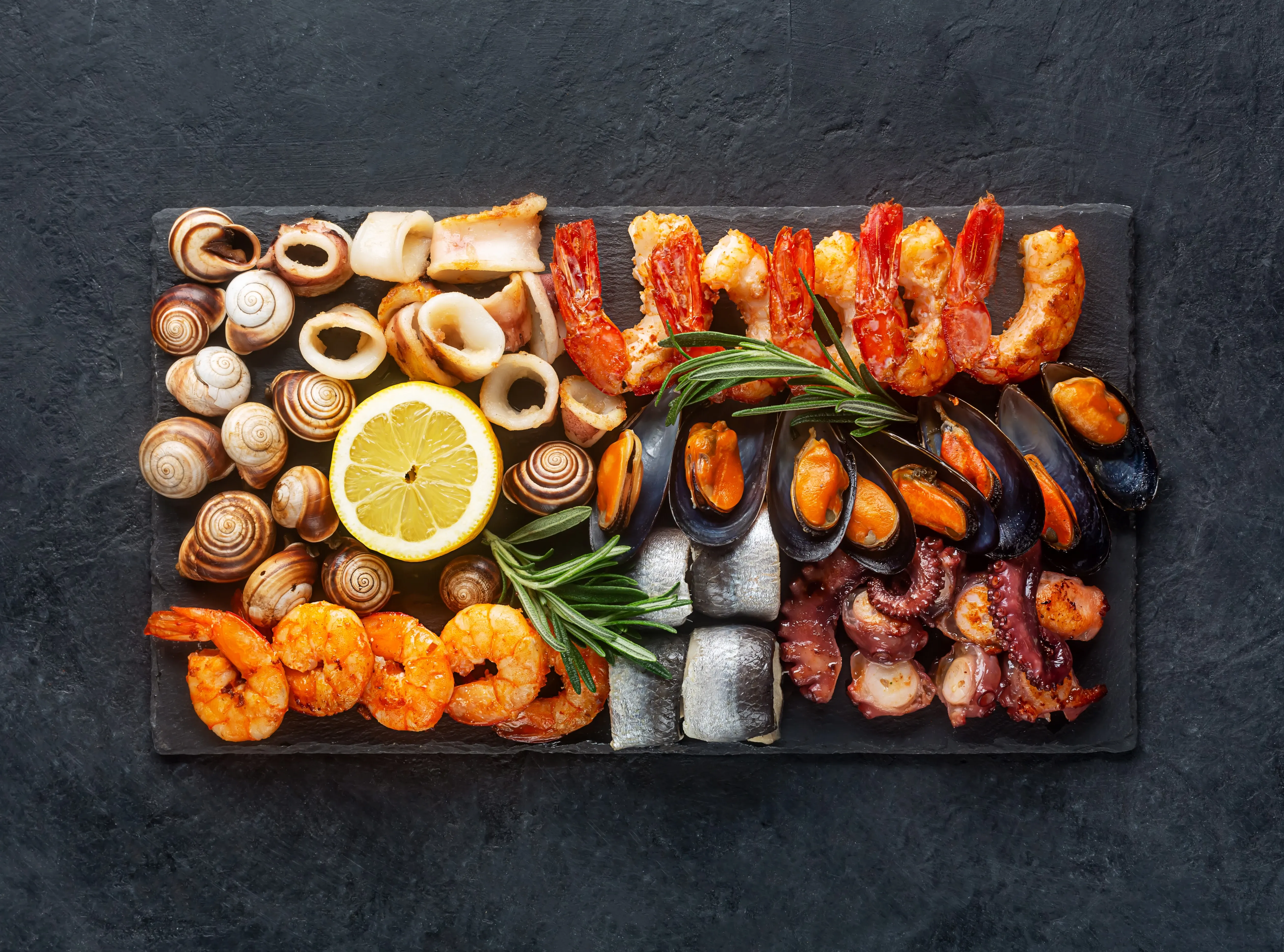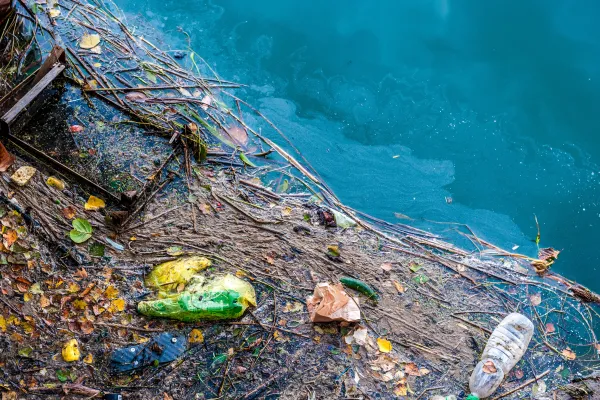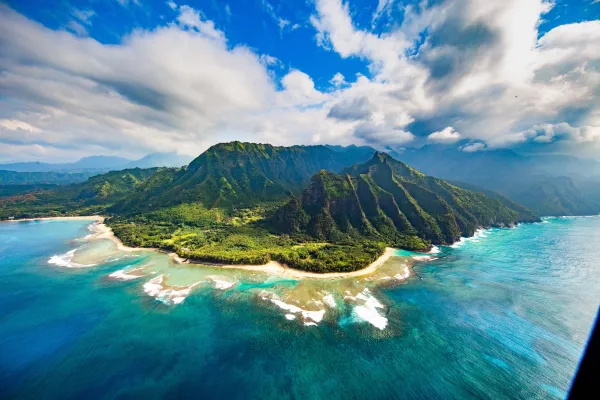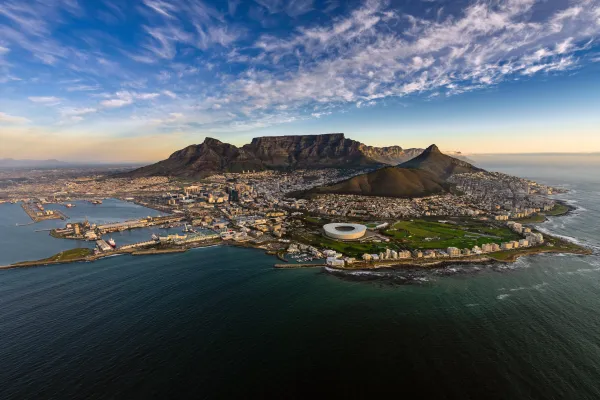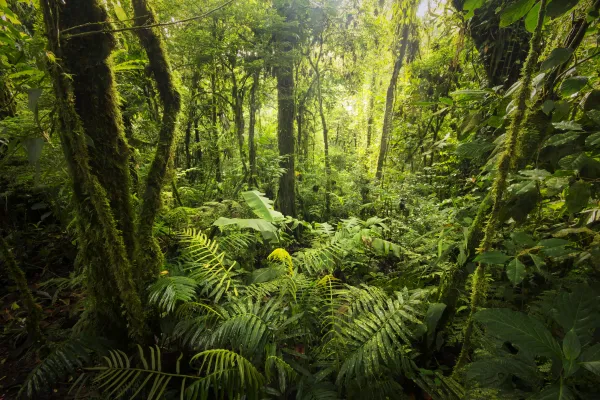Something fishy: Sustainable seafood choices
Seafood makes up a huge part of our modern-day diet, incorporated into traditional recipes and dishes across a diversity of cultures. From Southeast Asian prawn-fried rice to Scottish oak-smoked salmon, seafood is enjoyed globally, and consumption is increasing.
However, as demand rises, pressure is being put on the ocean’s fish stocks, leading to overfishing of certain species, and intensive farming of others. This has negative effects on the environment, such as the fact that some species are now threatened with extinction. So how can we ensure the seafood we choose to consume has the lowest possible impact on the environment?
Seafood has long been a significant component of the human diet, dating back to the times when access to the ocean was first established. In the present day, seafood is enjoyed on every continent, and advancements in food preservation technologies contribute to its growing accessibility and affordability. Over 7 million people currently rely on seafood as their main source of protein, and it also supports millions of livelihoods through the fishing industry, especially in coastal communities across developing nations. However, as global dietary habits and fishing practices change and evolve, the environmental impacts must be considered when taking choices.
Fish stocks are declining massively all over the oceans. This is due to several factors, such as climate change, habitat degradation, and pollution — but according to statistics, overfishing is by far the main cause. It’s a fishy situation: fishers are harvesting at a faster rate than fish can reproduce, leading to a net loss of populations.
This is currently being observed across hundreds of commonly consumed species, including cod, tuna, seabass, and salmon. If fishing is not carefully monitored and restricted, fish populations decline — which has detrimental impacts on entire marine food webs, as well as on fishermen and the availability of seafood to consumers.
1. Unsustainable fishing practices
Dynamite fishing
One sustainability problem is the various harmful fishing techniques used to catch fish and seafood. Dynamite fishing involves the use of explosives in the water to stun and kill shoals of fish, making them easy to catch in a net. This method has been used extensively across the Caribbean and Southeast Asian waters, destroying entire reef ecosystems and killing hundreds of organisms in addition to the targeted species. The pollution and noise caused by this method also impact larger species, such as seals, dolphins, and whales which are sensitive to intrusive noises.
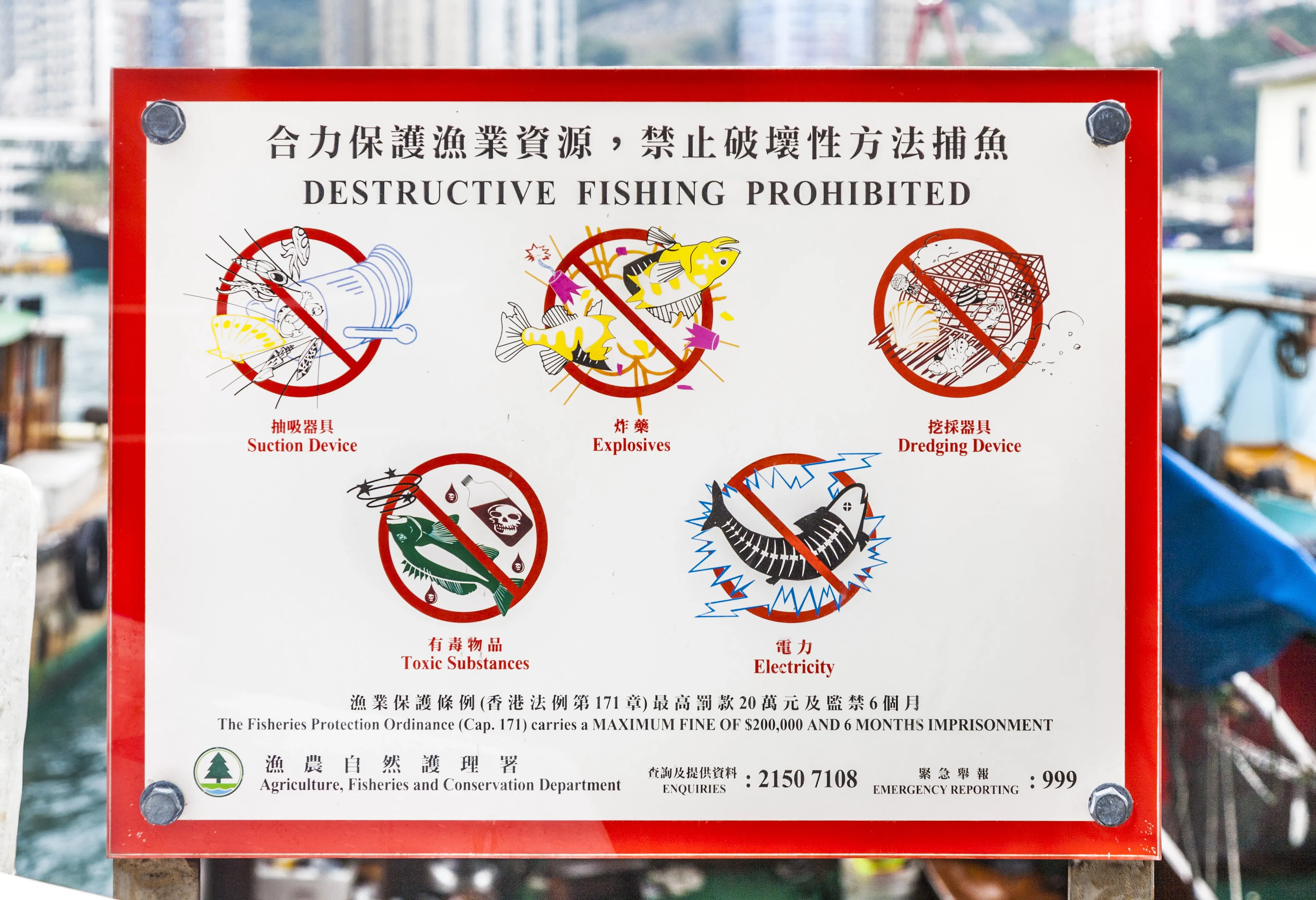
Dredging and trawling
Dredging and trawling also cause huge damage to marine ecosystems, as they involve scraping a large plough-like net along the seabed. This decimates any life living on the seafloor, such as coral ecosystems and benthic (bottom-dwelling) organisms. The waste ‘sludge’ collected by the dredge is often dumped over important marine habitat, causing widespread disturbance to fish and other organisms, such as release of sediments which have been observed causing issues across the Great Barrier Reef.
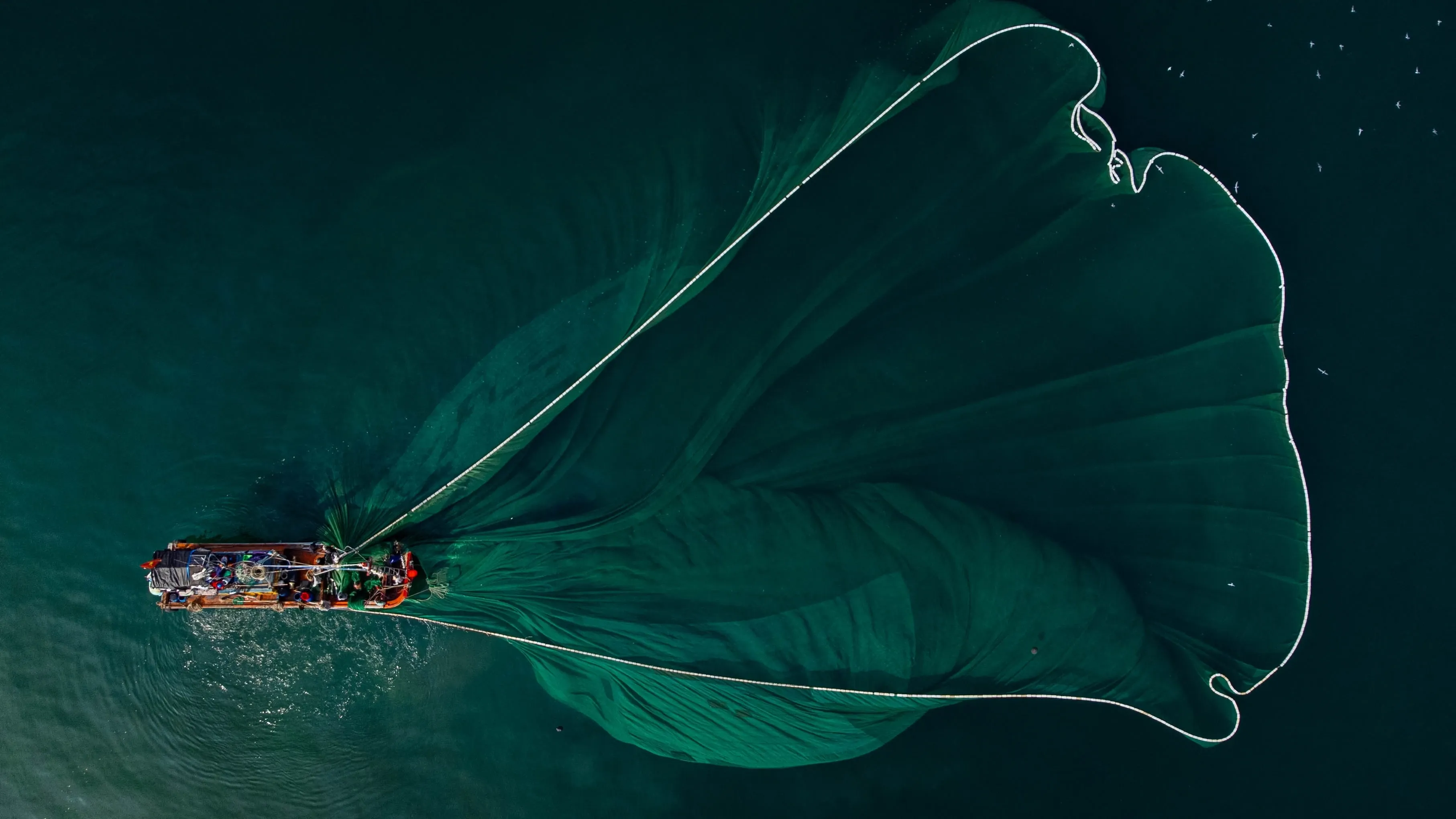
Shark-finning
Specifically targeting certain species without considering their population size or reproduction rate is also highly damaging. Shark-finning is an extremely damaging fishing practice, whereby sharks are caught, and their fins removed for use in shark-fin soup which is a highly valued delicacy in areas of Southeast Asia. Sharks are long-lived species, meaning they have smaller populations than other fish and take a considerable amount of time to mature and reproduce. They produce only a small number of offspring and are highly susceptible to overfishing.
Once a shark has been finned, the rest of the carcass is often thrown back overboard as waste, or sold cheaply, and often illegally, for food at wet markets. Thousands of sharks are killed every year to meet the growing demand for shark-fin soup, which has a significant impact on marine food webs. A healthy population of sharks is necessary to control other species.
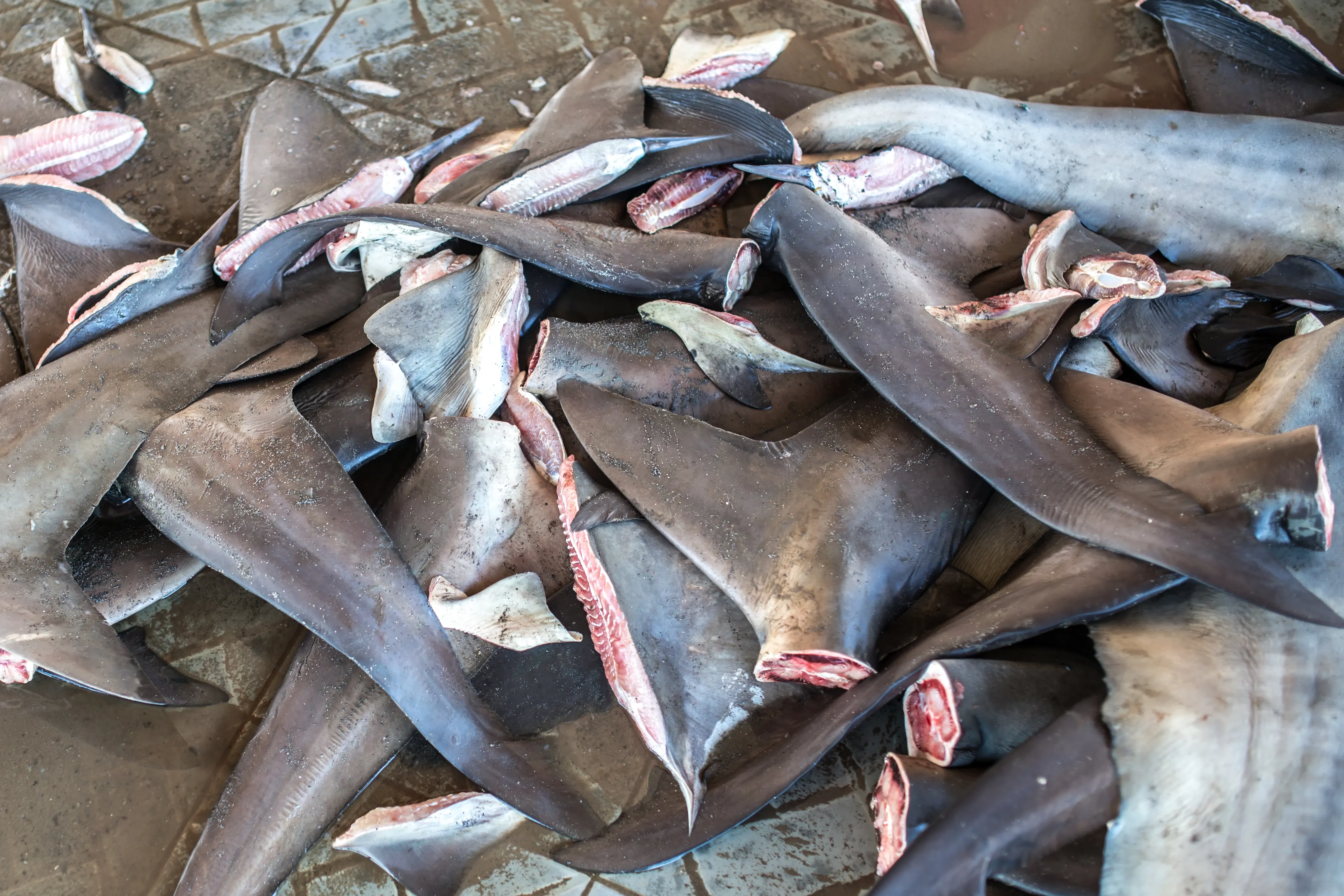
Demand for fish and chips
Fish and chips has become a very popular meal, not only in the UK but also across Australia. Many smaller shark species are targeted to feed this industry, labelled as ‘flake’ on menus so that consumers are unaware they are contributing to the global decline of sharks. Along with hundreds of other large marine animals such as whales and dolphins, sharks often become entangled in fishing gear and die from entanglement, injury, or for example drowning.
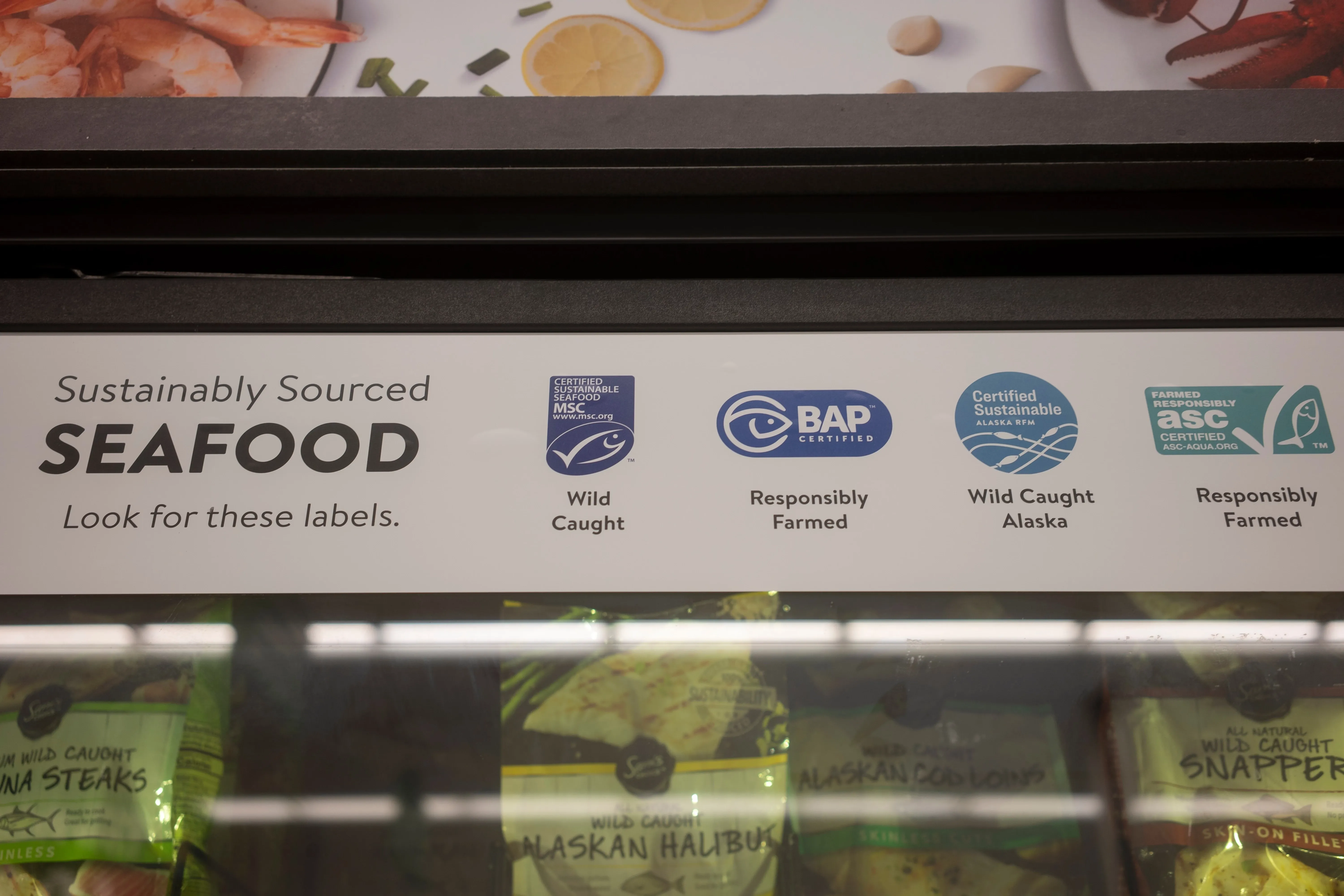
»Fish farming is particularly detrimental. Fish are kept at unnaturally high density in huge nets suspended in the ocean, close to the coast.«
2. Issues with aquaculture and mariculture
A seemingly foolproof solution to this problem is the farming of fish and other edible marine organisms – this is known as ‘mariculture’ which refers to farming within the ocean, or ‘aquaculture’ which refers to farming of aquatic species, in the ocean, freshwater, or in tanks and ponds on land. This means natural populations are less impacted by fishing, as demand can be satisfied by the farmed stock. However, mariculture and aquaculture have many negative impacts on the environment, often unknown to consumers.
Prawns are farmed in high quantities across Southeast Asia and often involve the clearing of important mangrove forests and coastal ecosystems to make way for prawn farming facilities. These farms also produce large amounts of pollution, which is released into the surrounding coastal environment, impacting biodiversity, and degrading natural habitat.
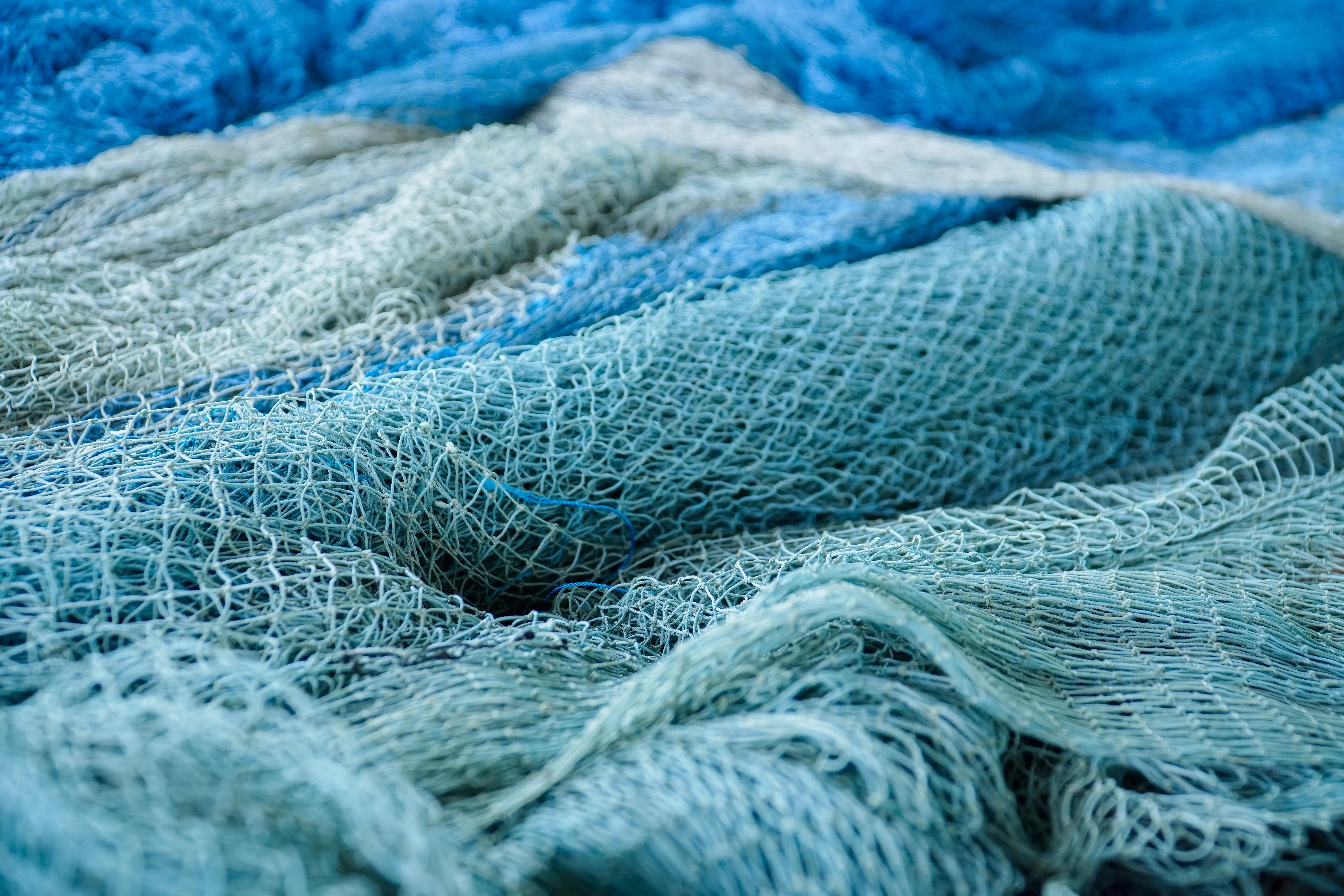
Fish farming is particularly detrimental. Fish are kept at unnaturally high density in huge nets suspended in the ocean, close to the coast. The fish are often genetically modified or bred to have certain traits, such as fast growth or high fat content, which is not natural for the species. The fish are fed huge amounts of synthetic feed containing antibiotics, hormones, and steroids to increase the growth rate and mass of the fish and thus achieve a higher yield for the fish farm. This puts a large amount of metabolic stress on the fish, which are already being held in abnormal and uncomfortable conditions.
Species such as salmon naturally migrate up freshwater rivers to spawn. However, this instinct is inhibited as the fish are kept in nets throughout their life cycle. Due to the dense conditions in the nets, disease spreads easily, just as it does when humans are in close contact. Sea lice are a huge problem for fish farms, spreading quickly through the population and leaking into the environment where they infect wild salmon. The lice feed on the fish tissue, essentially eating the fish while it is still alive, causing large amounts of suffering and a high mortality rate within farms. To reduce this issue, harmful chemicals and drugs are applied to the fish, which then wash into the surrounding environment. This adds to the waste mixture of fish feces, dead fish, uneaten food, and pollutants which are unloaded into the ocean, causing algal blooms and loss of local biodiversity. Salmon is farmed across the coasts of Norway, Scotland, and Canada, and seabass is commonly farmed within the Mediterranean Sea, both of which have largely detrimental impacts on the surrounding marine ecosystem.
3. Eco-friendly solutions
When purchasing seafood, packaging often has certified badges you can look for to ensure you are buying from a sustainable source. This means the fishery has been checked for legislation breaches and is monitored to make sure populations of the species are not overexploited. If buying from a fishmonger, you can ask the fishmonger to direct you to the most sustainably sourced, local catch which will likely also be the freshest. Many organizations provide easy, simple guidance available online such as the Monterey Bay Aquarium watch, and the MSC, which you can follow to help stop overfishing.
Over 80% of the seafood consumed annually is made up of only 5 organisms: tuna, salmon, haddock, cod, and prawns. Reducing your consumption of large fish such as salmon and tuna can help reduce the pressure on these endangered species, and by making sure the salmon you eat is wild-caught and not farmed, you can limit the environmental impact. Instead, eating species from lower levels of the food chain, such as mussels, sardines, and pilchard, or invasive species such as lionfish and pacific oysters which have been selectively removed from the environment, is a much more sustainable option. Choosing more unusual foods, including squid, or lesser-eaten fish like pollock and rockfish, can also help. However, the most impactful way to make a positive change for ocean species is to reduce your seafood consumption overall and take time to sustainably select, cook, and enjoy the seafood you do eat.
